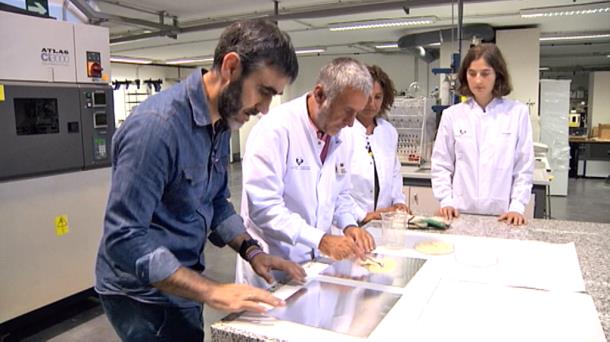Plastic solutions
2022/06/01 Etxebeste Aduriz, Egoitz - Elhuyar Zientzia Iturria: Elhuyar aldizkaria
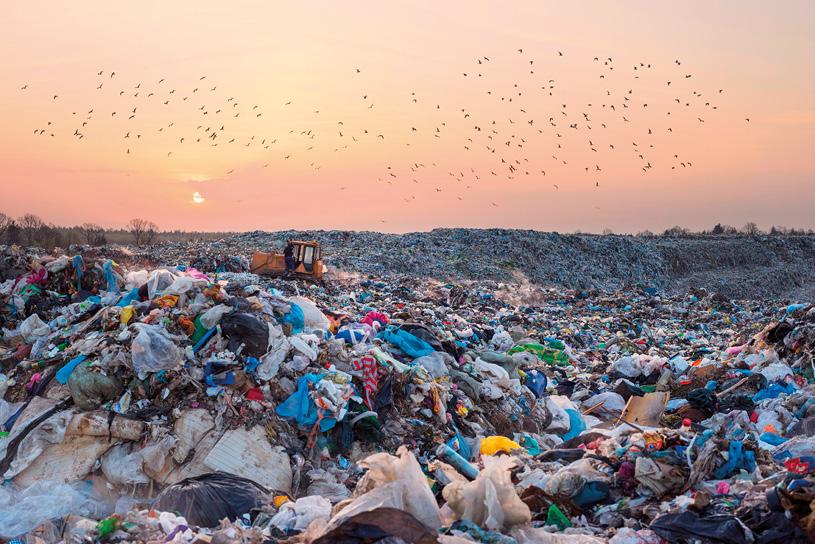
The United Nations has considered the deterioration of problems arising from plastic production and pollution. Plastic production has doubled in the last two decades, generating 461 million tons of plastic in 2021. And forecasts indicate that by 2040 it will double again.
Only 9% of textile waste is recycled; 19% is incinerated, 50% is landfilled and the remaining 22% ends up in uncontrolled landfills or in the environment, according to a report published by the OECD in February. It is estimated that in the world's rivers, lakes and oceans there are about 140 million tons of domestic waste.
Another report by WWF at the beginning of the year notes that 90% of the species tested have experienced negative effects of noise pollution, that significant ecological risk levels have been exceeded in some regions of the world (e.g. the Mediterranean), and that it has been estimated that, even if plastic production is completely left, the amount of marine microalgae would double by 2050 and could be 50 times higher for 2100.
“We have been talking and warning about these things for a long time, but I see few actions,” says Alaitz Etxabide Etxeberria, researcher of the BIOMAT research group (UPV/EHU). Etxabide is clear that plastic pollution is a really serious crisis. Therefore, while questioning its degree of compliance, it has seen well its commitment to the United Nations: “At least it is a step to put laws in place and above all to force industry to make a change.”
Haritz Sardon Muguruza, head of the UPV/EHU Sustainable Polymers group, agrees that he has contacted researchers to decide on these measures: “They tell us they want to take our opinion into account and ask us to prepare a report. It therefore appears that the measures will be well targeted. Then you have to see what happens in the end, who signs and who doesn’t; see if it doesn’t happen like the Kyoto protocol, where not much has been done.”
Need for technological development
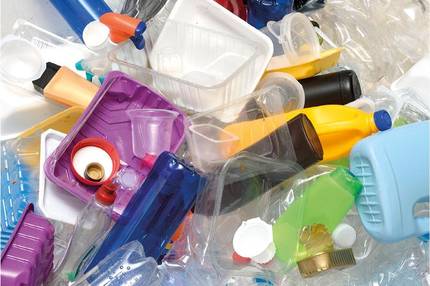
The starting point therefore does not seem to be bad. But the challenge is not just any. And to what extent are we technologically prepared to tackle the problem?
“In Europe we are the most advanced and yet we still lack much,” says Sardon. “Researchers have been working on these kinds of things for many years, but there is a significant leap from what we do in the lab to implementation in a company. I believe that in the end the social movement has driven action to be taken, and governments are funding and has started to move quite a bit.”
“Technology still needs development, for example, to put new plastics on the market,” says Etxabide. And recycling systems aren’t good either.” One of the biggest problems is that, although we call everything plastic, they're very different materials that are all collected at once. When this is mechanically recycled, you get a plastic with worse properties, it is not valid for all uses and can only make certain cycles.
“The technology to do separation well is not yet sufficiently developed and what is developed is very expensive,” says Sardon. It's cheaper to burn, separate and recycle plastic. “It will therefore be very good to take action at the United Nations, as one of the intentions is for producers to deal with it at the end of the plastic lifecycle or to bear its cost.” This is one of the keys to the resolution that they have signed at the United Nations. That would prevent the generation of new plastic from getting so cheap. “The use of recycled plastic is being promoted from Europe, but nowadays recycled polyethylene (PET) used in bottles is sold more expensive than the new one. It makes no sense.”
From recycling to surplus
Mechanical recycling therefore has room for improvement. But it also has huge limitations. On the contrary, chemical recycling is raising higher expectations. It was precisely at the end of March that a paper by Sardon and his colleagues was published in Nature, analysing the possibilities offered by chemical recycling. They say that “upcycling is in childhood,” but “can change the model in the treatment of household waste, transforming it into high-value raw materials.”
Plastics are designed to be chemically very stable, so their chemical transformation is not easy. But in many cases you can get original monomers, new polymers or oils.
“Some plastics, usually containing carbon bonds, are very resistant and difficult to break. In these cases, obtaining the monomer with which these polymers have been created is economically and energetically expensive and complex, but you can get a kind of oil, similar to what you get today from oil, and use it to create new monomers,” explains Sardon. “In other plastics, the joints are weaker and, by chemical recycling, the initial monomers can be obtained directly,” he adds. The greatest difficulty is, once again, the mixing of different plastics and their additives, dyes, etc.
“In some industrial polymers, such as polycarbonates, polyethylene terephthalate or polyamides, chemical recycling is a good option,” says Sardon. More and more companies are interested and facilities are being set up in Europe and the United States. But to be profitable, the key is to have enough volume. “The garbage must be collected, separated and taken to the appropriate facility, and today we do not have that infrastructure.”
Another key to better recycling could be reducing food types. “We have a lot of types of oil, are they all necessary?” says Sardon. “Perhaps we can reduce the types of problems, facilitating recycling.”
Etxabide believes this: “Some countries have begun to remove some plastics from the market because they are difficult to recycle, such as polystyrene. If we stick with the plastics that are best recycled and disposed of, it will be easier to manage waste, improve recycling processes, extend the cycle and therefore reduce the need for new plastics.”
Missed reduction and reuse

In fact, Etxabide sees the path of reduction as essential. “We consume too much, we don’t need it. For example, we eat too much, which also leads to other problems. Reducing food consumption, along with reducing health problems, would reduce plastic consumption and allow better management.”
Etxabide recalls the three famous British R (reduce, reuse and recycle): “The first one has been reduced and the second one has been reused, and I think we have forgotten and left alone with recycling.”
“It has been shown that 20% of packaged food can be sold in reusable packaging. This change is possible.” In fact, most plastics are single-use. According to the OECD study, two thirds of packaging waste comes from plastics whose shelf life is less than five years, and 40% is packaging. “These plastics, once used, have the same properties,” says Sardon. “We’re using a material that will last 100 or 200 years for one-week applications.”
“Plastic is necessary but can be reduced,” says Etxabide, “and as much as possible should be replaced by reusable and then renewable and biodegradable materials.” In fact, “the bio prefix is very nice, but what is behind bioplastics and biodegradable and compostable plastics is not all that beautiful”, he warns.
New plastics
On the one hand, there are plastics from renewable but not biodegradable sources. “The industry is taking land to grow corn and from there make bioplastics. This entails the problem of land use, set-aside to produce food, deforestation, water pollution, etc.”, Etxabide says. "And they don't solve the final problem, because even if they're bio, they're not biodegradable. That’s not a solution.”
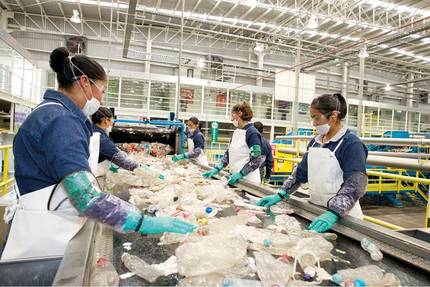
Sardon sees interesting possibilities: “If we want to reduce CO2 emissions, we need to reduce dependence on oil, and it is interesting to use biomass for that. For example, algae grow very easily and you can get very interesting materials.” Biomass plastics currently do not reach 1%.
On the other hand, there are also biodegradable oil-derived plastics. “They degrade, but they don’t solve the real problem, the use of oil,” says Etxabide. Sardon also questions the value of biodegradation: “This is how you lose the value of plastics in nature. Plastics have been working hard to be very good and it would be better to reuse or recycle than to throw away to maintain this value. For some applications they may be interesting, but not for everything. In the case of clothing, for example, it has cost us a lot to generate them and at the end of their lives it is much better to treat and reuse them”.
Finally, there are biodegradable polymers from renewable sources. Etxabide would bet on them. “If possible, generating from waste such as food waste.” In this sense, Etxabide is investigating with polymers from fish waste. However, it recognises that these polymers are still rather limited, for example for the shipbuilding industry. “The firewall area has some less favorable properties than the synthetic ones. Because synthetic have good properties."
But there are materials that are raising hopes. Etxabide highlights PHA (polyhydroxyalkanoates). They are produced by bacteria that ferment sugars and lipids and are compostable. They can also have different and similar properties to synthetic ones. “PHA come with strength. I think they can be a good opportunity.”
Key waste management
On the other hand, poor management of biodegradable and compostable waste creates problems. “If something compostable ends up in landfills, methane is produced and has a much greater greenhouse effect than CO2,” says Etxabide. “There are alternatives, but they have to be managed well, otherwise they contaminate a lot.”
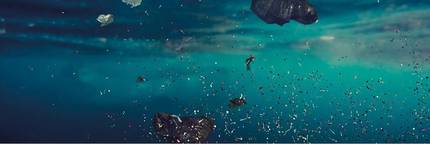
Sardon agrees. “We do not know very well what can happen in the degradation of biodegradable polymers. For example, the pH of the seas and the ecosystems that can affect them is unknown.” He believes we should be cleaner. “If technology develops we can treat plastics, but if we place them in the environment we will not be able to treat them. I think the solution is better recycling and not dumping the seas and rivers. And with appropriate filters to prevent microplastics from reaching the sea. We have realized that in the last 30 years we have done nothing well and we have to do much better.”
“The ball is partly in Kimziori’s court,” says Sardon. In the same line he spoke, five years ago, the chemist Marian Iriarte Ormazabal, when he stated that “in the future I would like to see if we are able to solve the problems caused by waste”. And the same goes for the journal Nature of 27 April. “We are the bad guys in the film, and now we have to have the paths for change,” says Sardon. “We can’t do it alone, of course, but we can do a lot.”
Further research and development of technology is needed. In this sense, Sardon highlights that little work has been done on actual waste. “In recycling studies, most of the time you work with pure plastics, and you don’t realize that if you mix with this plastic there will be a thousand other things, and when you go to the real material there are big differences.”
“I believe that industry can do more than it is doing and I hope that this change of legislation that they are proposing will contribute to this,” says Etxabide. “But we all have to change things, industry, consumers, governments…”.
One thing is clear about both. “Plastics are necessary for many things,” says Etxabide. Sometimes, even when we find it useless, like a plastic broccoli in the supermarket, or a cucumber. “Plastic spends four more days on cucumber and prevents a lot of food from being lost.”
“But we have to use as little as possible, reuse as much as possible and make what is used renewable and biodegradable,” Etxabide points out. “Plastics have brought us many advantages, including for the environment, and we will continue to use them,” says Sardon, but we have to use them better. And first you have to think about what the life of that plastic is going to be and how we're going to treat it at the end."

Gai honi buruzko eduki gehiago
Elhuyarrek garatutako teknologia






